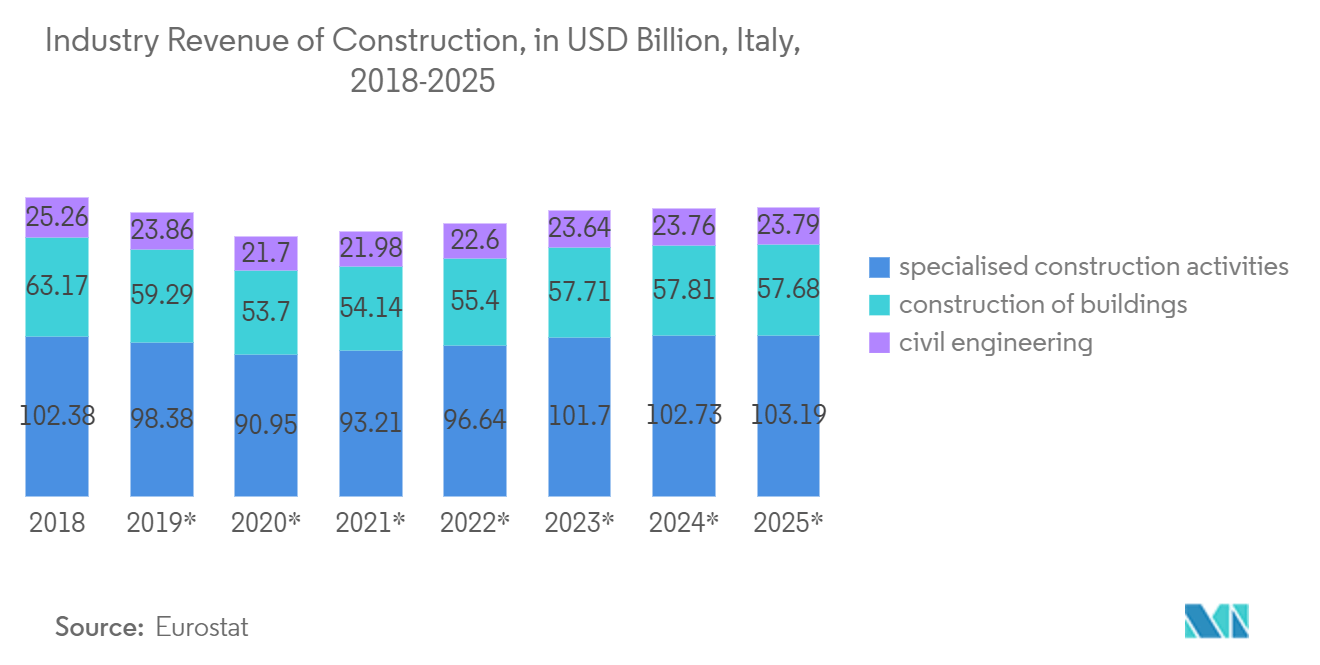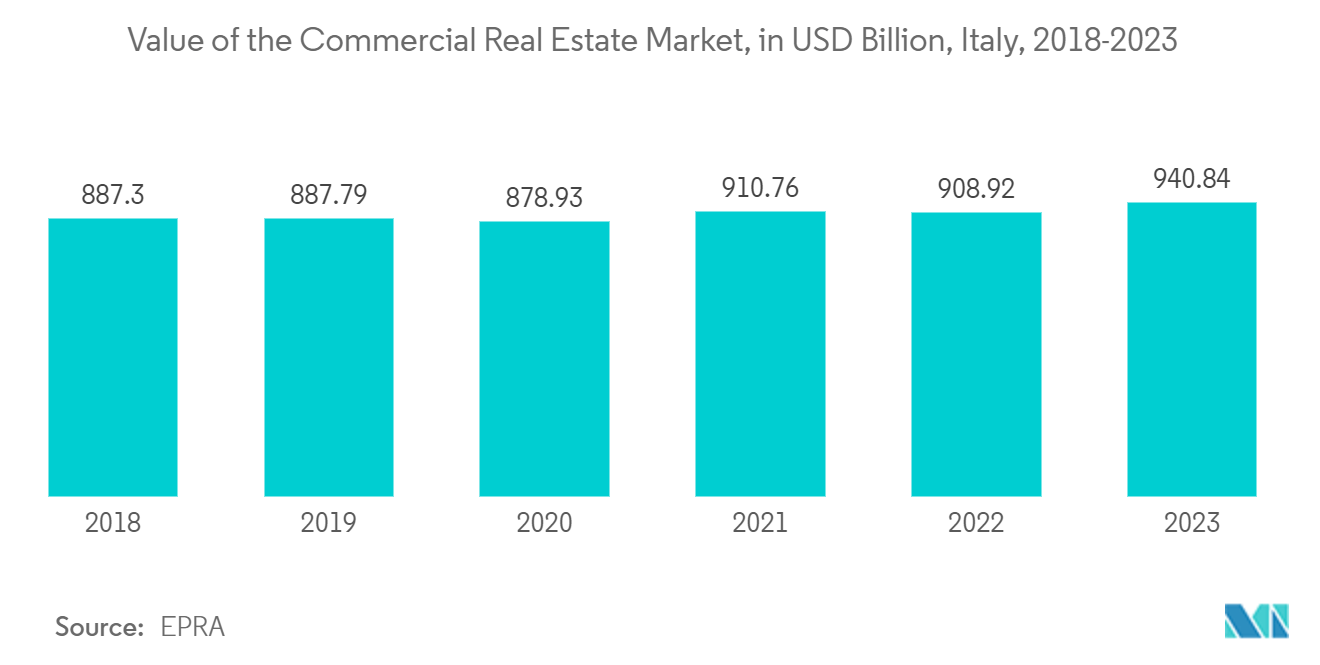Market Trends of Italy Access Control Industry
The Biometric Readers Segment is Expected to Drive the Market's Growth
- Biometric Readers are devices that use physiological or behavioral data measurements to determine authorization for access. These may include facial recognition, fingerprint recognition, hand/finger geometry, vein geometry, iris recognition, retina scan, voice recognition, and signature dynamics. In the biometric access control system, biometric authentication refers to recognizing humans by their physical uniqueness. These remove the requirements of cards, fobs, keys, and key pins and use strict measuring procedures to make the authorization of a person’s identity.
- The access control system not only facilitates entry but also provides the data related to the entry of visitors. Various software, such as attendance software, can be integrated with any existing payroll software to give an automatic record of information collected by the attendance system, saving time and resources in a recording. A standard biometric access control system is comprised of four main types of components: a sensor device, a quality assessment unit, a feature comparison and matching unit, and a database.
- There are biometric readers who are only focused on one type of biometric (face, fingerprint, and finger vein), and there are many who use multiple biometrics to confirm data. For example, fingerprint and finger vein biometrics are often embedded in the software, providing maximum security. Fingerprint biometrics are the most common mode of biometrics, but voice recognition and face recognition are now getting almost as accepted as fingerprints.
- Biometric readers find application in healthcare facilities to ensure secure access to patient records, medication storage areas, and restricted zones. By implementing biometric access control, hospitals and clinics can prevent unauthorized personnel from accessing confidential information and maintain the integrity of medical facilities.
- Biometric readers are vital in ensuring secure access to government buildings, public institutions, and airports. The increasing construction in Italy is anticipated to offer lucrative opportunities for the growth of the studied market. For instance, according to Eurostat, the revenue of construction in Italy is anticipated to amount to approximately USD 57.68 billion by 2025.

The Commercial Segment is Expected to Witness a Higher Growth Rate in the Market
- The commercial sector in Italy has embraced electronic locks access control devices to enhance security and streamline access management. These devices are commonly used in office buildings, coworking spaces, and retail establishments. Electronic locks allow for efficient access control by providing customizable access permissions to different individuals or groups. They also enable centralized control and monitoring of multiple access points, ensuring only authorized personnel can enter restricted areas.
- Card readers are widely used in corporate offices to manage employee access and ensure that only authorized individuals can enter restricted areas. These devices provide an efficient and convenient solution for controlling access to sensitive information and valuable assets. Further, access control devices can be seamlessly integrated with other security systems, such as video surveillance and alarm systems. This integration enhances the overall security infrastructure and provides a comprehensive solution for organizations, leading to increased demand for these devices.
- With the rising threat of theft, vandalism, and unauthorized access, there is an increasing demand for robust security systems in Italy. Card readers and access control devices offer an effective solution for enhancing security, thereby driving their adoption in various sectors.
- Physical security is gaining a lot more traction, where there are more thefts than ever. Rising security concerns at residential locations are likely to be the driving force behind the adoption of the homeland security system. The growing acceptance of smart infrastructure projects like those for smart homes, buildings, and cities will support the market's expansion even more.
- The increasing value of commercial real estate in Italy is likely to augment the demand for the studied market. For instance, according to the European Public Real Estate Association (EPRA), as of 2023, the value of commercial real estate in Italy was estimated at almost USD 941 billion, up from approximately USD 909 billion in 2022.


